Verge Ensemble at the Corcoran
By Stephen Brookes • The Washington Post • March 25, 2013
The flute hasn’t always gotten a lot of respect. Sure, it has a beautiful sound, and more than a few masterpieces have been written for it. But its relatively thin palette of color — and thus of expressive possibilities — has tended to relegate it to a ghetto of light, atmospheric music, rather than the emotionally complex work where composers put their best ideas.
Over the past five or six decades, though, flutists have been fighting back, and a battery of new techniques — percussive key-clicks, multiphonics, singing into the flute — has extended the flute into intriguing realms. And to judge by a concert by Verge Ensemble flutists Carole Bean and David Whiteside on Sunday at the Corcoran Gallery of Art, the flute is emerging as one of the most expressive and interesting instruments in contemporary music.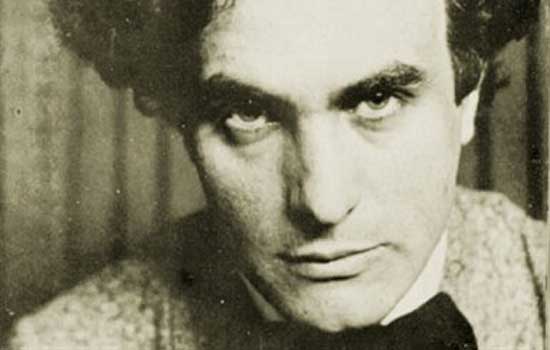 Edgard VareseThe afternoon opened with Edgard Varese’s pathbreaking “Density 21.5,” a work from 1936 that uses extended techniques to evoke a stark, almost elemental power, and builds to a white-hot intensity. Whiteside’s reading of it was surprisingly tame, but he came back stronger in Andrew Rindfleisch’s 1994 “Tears,” another solo work that — as the name suggests — is an intense and highly expressive lamentation, with much musical weeping and shrieking punctuated with gasping breaths.
Edgard VareseThe afternoon opened with Edgard Varese’s pathbreaking “Density 21.5,” a work from 1936 that uses extended techniques to evoke a stark, almost elemental power, and builds to a white-hot intensity. Whiteside’s reading of it was surprisingly tame, but he came back stronger in Andrew Rindfleisch’s 1994 “Tears,” another solo work that — as the name suggests — is an intense and highly expressive lamentation, with much musical weeping and shrieking punctuated with gasping breaths.
Things turned sunnier in the next two works. British composer Ian Clarke’s “Great Train Race” is a high-velocity tone poem (subject obvious) and a tour de force of inventive techniques. When Belarusan flutist Aleksandr Haskin played it at the Terrace Theater a couple of years ago, it nearly tore the roof off the place; Bean’s reading of it didn’t capture that explosive power, but her heartfelt reading of Clarke’s “Sunstreams” (with Jenny Lin at the piano) was a lyrical delight.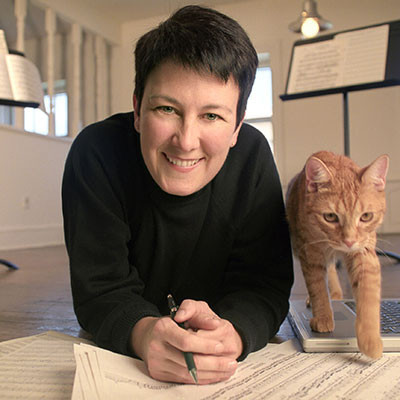 Jennifer HigdonWhiteside returned for Aaron Jay Kernis’s poignant “Air,” and he and Bean took infectious pleasure in Dariusz Przybylski’s “Onyx,” whose idiomatic back-and-forth — with much fluttering and cooing — evoked birds in articulate conversation.
Jennifer HigdonWhiteside returned for Aaron Jay Kernis’s poignant “Air,” and he and Bean took infectious pleasure in Dariusz Przybylski’s “Onyx,” whose idiomatic back-and-forth — with much fluttering and cooing — evoked birds in articulate conversation.
Unfortunately, one of the highlights of the program, Kaija Saariaho’s “Laconisme de l’aile” for flute and tape, couldn’t be performed for technical reasons. But Bean turned in a fast, furious account of Jennifer Higdon’s “rapid.fire” for solo flute, which flew by like an angry hummingbird, and was joined by Whiteside and Lin for Higdon’s “running the edgE” a dancelike work with dark sonorities and an agreeably menacing edge. The afternoon closed with Martin Bresnick’s flute concerto “Pan Penseroso” (performed here in a new version for two flutes and piano), a rich, stunningly beautiful work that seems destined to become a classic in the 21st-century flute repertoire.
James Galway at the Kennedy Center
By Stephen Brookes • The Washington Post • March 18, 2013
It was Washington’s good luck to have Sir James Galway in town for St. Patrick’s Day, when the renowned Irish flutist appeared at the Kennedy Center for a light but hugely entertaining concert of (mostly) Irish-themed music. From traditional folk tunes to a cheerful little jig for pennywhistle by (of all people) Henry Mancini, Galway played the charmer throughout the two-hour show, telling stories, sharing the stage with his flutist wife and a host of fine young accompanists, and displaying the astonishing virtuosity and vibrant tone that even now, at 73, he shows little sign of losing.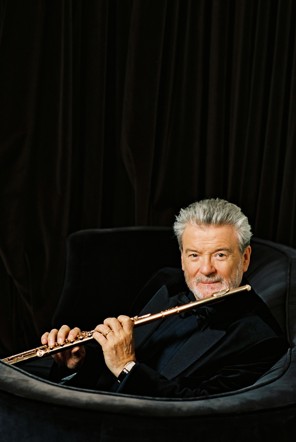 The afternoon was billed as Galway’s “Legacy Tour,” and given his rather robust self-regard (on his Web site, he calls himself “the supreme interpreter of the classical flute repertoire” and — oh, dear — “a legend”) you might have expected a program of important masterworks. But “legacy,” he explained, referred to music he had cherished all his life, works with a personal and even sentimental value.
The afternoon was billed as Galway’s “Legacy Tour,” and given his rather robust self-regard (on his Web site, he calls himself “the supreme interpreter of the classical flute repertoire” and — oh, dear — “a legend”) you might have expected a program of important masterworks. But “legacy,” he explained, referred to music he had cherished all his life, works with a personal and even sentimental value.
There was some early Mozart (the lovely Quartet for Flute and Strings No. 1 in D, K. 285, given a spirited and affectionate reading) and a couple of splashy show-off pieces (including Francois Borne’s “Fantaisie Brillante [On Themes from Georges Bizet’s Carmen]”) that he tossed off with wit and almost casual virtuosity. Debussy’s ephemeral “Clair de Lune” was the only clunker of the concert — an oddly earthbound reading so sodden with vibrato it felt like a heap of wet laundry — but it was quickly redeemed by a pair of light-as-air dances from the baroque composers Marin Marais and Francois-Joseph Gossec.
The real heart of the afternoon, though, was in its second half, when Galway began to explore, in a personal and authentic way, his Irish roots. The centerpiece was a fantasy titled “In Ireland” by the early-20th-century composer Hamilton Harty, and Galway seemed to come completely into his own as he played this ravishing work — a genuinely heartfelt performance that alone was worth the price of admission.
A few Irish folk songs followed, including the poignant “She Moved Through the Fair,” before Galway moved back to lighter ground with the lively “Irlandaise” (from Claude Bolling’s “Suite for Flute and Jazz Piano”) and a pair of charming, Irish-flavored works by Henry Mancini — with Galway drawing the audience in for a raucous, full-throated reading of “Baby Elephant Walk.”
Sharon Isbin at the Church of the Epiphany
By Stephen Brookes • The Washington Post • March 17, 2013
It would be hard — make that nearly impossible — to find an American classical guitarist more influential than Sharon Isbin. Her jaw-dropping technique and lyrical interpretations have helped bring the guitar into the classical mainstream, and a rather spectacular array of new masterworks has been written expressly for her. So it was a treat to hear Isbin perform Friday night at the Church of the Epiphany, where she combined staples of the repertoire with newer works that pushed the guitar into provocative, edgy new realms. The theme of the program was memory — “the composer looking back,” as Isbin put it — and there was a certain emotion-recollected-in-tranquillity tone to the evening. A genial little samba by Isaias Savio got things rolling, followed by Isaac Albeniz’s “Mallorca” and mesmerizing “Asturias,” light-filled works tossed off with great charm and color. But the music turned darker — and infinitely stranger — with Benjamin Britten’s “Nocturnal After John Dowland, Op. 70.” Dating from 1963, it’s a wildly imaginative masterpiece, a phantasmagoric journey through the feverish and often unsettling world of the subconscious. Isbin, who conjures an extraordinary palette of sound from her instrument, turned in a wonderfully shadowy reading that resolved with great tenderness into Dowland’s original theme. The effect was like waking from a deep and compelling dream.
The theme of the program was memory — “the composer looking back,” as Isbin put it — and there was a certain emotion-recollected-in-tranquillity tone to the evening. A genial little samba by Isaias Savio got things rolling, followed by Isaac Albeniz’s “Mallorca” and mesmerizing “Asturias,” light-filled works tossed off with great charm and color. But the music turned darker — and infinitely stranger — with Benjamin Britten’s “Nocturnal After John Dowland, Op. 70.” Dating from 1963, it’s a wildly imaginative masterpiece, a phantasmagoric journey through the feverish and often unsettling world of the subconscious. Isbin, who conjures an extraordinary palette of sound from her instrument, turned in a wonderfully shadowy reading that resolved with great tenderness into Dowland’s original theme. The effect was like waking from a deep and compelling dream.
The evening’s second half was nearly as intriguing. Bruce MacCombie’s “Nightshade Rounds,” with its shimmering cascades of repeated notes, was written for Isbin more than three decades ago but is still a delight, and Andrew York’s agreeable, folk-flavored “Andecy” served as a sort of resting spot among the more adventurous works on the program. And few new works are as adventurous as “Seven Desires for Guitar,” written for Isbin by the Chinese composer Tan Dun. Combining flamenco-style foot-stomping with the bent notes of the ancient Chinese pipa, it’s a freewheeling work with a kind of elemental energy and anything-goes, postmodern lack of inhibition. Agustin Barrios Mangore’s classic “La Catedral” closed the program, interrupted faintly — and a bit poetically — by the bells of the church.
Jennifer Koh and Jaime Laredo at the Terrace Theater
By Stephen Brookes • The Washington Post • March 15, 2013
There was something of a reunion for alumni of the Curtis Institute of Music on Thursday night, when violinist Jennifer Koh (class of 2002) and her former teacher Jaime Laredo (’59) teamed up at the Terrace Theater with the Curtis Chamber Orchestra (under the baton of Curtis fellow Vinay Parameswaran) for a program that included a new work by — does it even need to be said? — a composer on the Curtis faculty.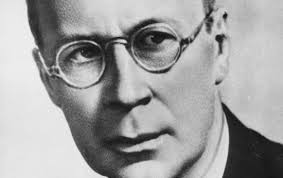 Jennifer KohThat made for an intriguing musical “conversation” among generations — and particularly between Koh and Laredo, two distinctive personalities who played against — and with — each other all evening, in four mostly-contemporary concertos for two violins. Opening with Bach’s Concerto for Two Violins, Strings and Continuo in D minor, BWV 1043, the two displayed deep sympathy and deeply contrasting individuality, with Laredo’s lean, almost astringent sound virtually gleaming against the warmer and more sensual tone that Koh drew from her instrument. The interpretations, too, seemed to crackle with that vibrant, yin-yang electricity between equal and deeply connected poles: detachment and passion, masculinity and femininity, age and youth.
Jennifer KohThat made for an intriguing musical “conversation” among generations — and particularly between Koh and Laredo, two distinctive personalities who played against — and with — each other all evening, in four mostly-contemporary concertos for two violins. Opening with Bach’s Concerto for Two Violins, Strings and Continuo in D minor, BWV 1043, the two displayed deep sympathy and deeply contrasting individuality, with Laredo’s lean, almost astringent sound virtually gleaming against the warmer and more sensual tone that Koh drew from her instrument. The interpretations, too, seemed to crackle with that vibrant, yin-yang electricity between equal and deeply connected poles: detachment and passion, masculinity and femininity, age and youth.
That remarkable opening, however, was followed by Philip Glass’s “Echorus.” To some ears, Glass’s music rings with luminous, mesmerizing beauty; to others, it’s toothless, repetitive mush, best suited to slow-moving minds. Even Koh and Laredo couldn’t rouse it to anything resembling life. David Ludwig, though, seems to have more going on upstairs. The Curtis composer’s four-movement “Seasons Lost” is a sort of global-warming-era take on Vivaldi’s iconic masterpiece, a wistful look at how the seasons are slowly losing their identity. Ludwig has no shortage of interesting ideas — and a fine talent for evoking a sense of memory and mystery — and “Seasons” proved a worthwhile listen.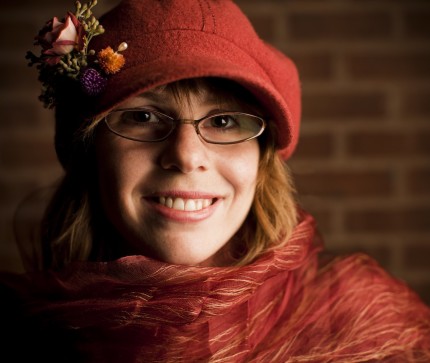 Anna ClyneBut the most captivating new work of the evening may have been Anna Clyne’s “Prince of Clouds.” Like Ludwig, Clyne writes in an accessible, fairly conventional musical language but brings to it a natural, almost casual virtuosity of expression. Played ferociously by the entire ensemble, “Prince” had a rich, robust sweep to it that was exhilarating from beginning to end.
Anna ClyneBut the most captivating new work of the evening may have been Anna Clyne’s “Prince of Clouds.” Like Ludwig, Clyne writes in an accessible, fairly conventional musical language but brings to it a natural, almost casual virtuosity of expression. Played ferociously by the entire ensemble, “Prince” had a rich, robust sweep to it that was exhilarating from beginning to end.
A glowing performance of Tchaikovsky’s lovely Serenade for Strings in C, Op. 48, closed the evening and was played with great elegance and style — as they had all night — by the young musicians of the Curtis Chamber Orchestra.
Juho Pohjonen at the Terrace Theater
By Stephen Brookes • The Washington Post • March 13, 2013
Never mind the title: There’s been plenty of fire in the Kennedy Center’s “Nordic Cool” series this past month. But it’s been a particularly Scandinavian kind of fire — calm on the surface, explosive underneath — and on Tuesday night at the Terrace Theater the young Finnish pianist Juho Pohjonen showed just how searing “cool power” can really be.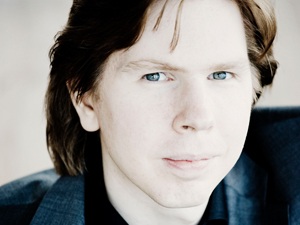 The evening was steeped in the classical tradition, with two works by Mozart bookending largely neoclassical works by the Norwegian composer Edvard Grieg and the Dane Carl Nielsen. Mozart’s stately Prelude and Fugue in C, K. 394, opened the concert, and it was quickly apparent that Pohjonen has both impeccable technique and a cleareyed approach to music, unleashing the fugue with stunning clarity and precise dynamic control, if also a certain formality and distance. Cool, yes; clinical, maybe a bit; but powerful, absolutely.
The evening was steeped in the classical tradition, with two works by Mozart bookending largely neoclassical works by the Norwegian composer Edvard Grieg and the Dane Carl Nielsen. Mozart’s stately Prelude and Fugue in C, K. 394, opened the concert, and it was quickly apparent that Pohjonen has both impeccable technique and a cleareyed approach to music, unleashing the fugue with stunning clarity and precise dynamic control, if also a certain formality and distance. Cool, yes; clinical, maybe a bit; but powerful, absolutely.
Grieg’s “From Holberg’s Time” Op. 40 followed — a pleasant suite built on 18th-century dance movements, with an agreeable sense of nostalgia but not much else. Far more interesting was Nielsen’s 1917 Chaconne, Op. 32, also steeped in classical traditions but with a much sharper bite than the Grieg. Pohjonen seemed to warm up and become freer as he played, even bringing a welcome touch of madness to the manic, discordant, and fantastically exciting climax.
Mozart’s dark Sonata in A Minor, K. 310, closed the program, and Pohjonen seemed to find a kind of serenity in the melancholy drama that runs through the work. But it was Grieg’s Ballade in G Minor, Op. 24, that formed the real heart of the evening. This is a dark, confessional work from 1876 that seems to swarm with Grieg’s personal demons, and Pohjonen dived into it with complete confidence, a superb performance of a subtle and complex work.
Pacifica Quartet at the Kreeger Museum
By Stephen Brookes • The Washington Post • March 3, 2013
T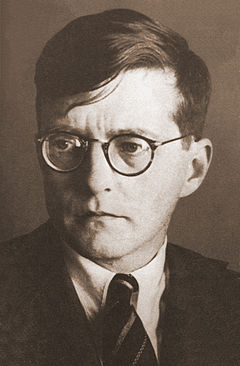 Dmitri Shostakovichhere are so many terrific young string quartets around these days that it’s hard to leave the house without tripping over one. But the Indiana-based Pacifica Quartet has been garnering particular praise lately for its performances of the complete quartets of Beethoven, Shostakovich and Elliott Carter, so perhaps it wasn’t surprising that the Kreeger Museum was packed Saturday night with alert and slightly quivering ears, eager to hear what these intriguing players could do.
Dmitri Shostakovichhere are so many terrific young string quartets around these days that it’s hard to leave the house without tripping over one. But the Indiana-based Pacifica Quartet has been garnering particular praise lately for its performances of the complete quartets of Beethoven, Shostakovich and Elliott Carter, so perhaps it wasn’t surprising that the Kreeger Museum was packed Saturday night with alert and slightly quivering ears, eager to hear what these intriguing players could do.
The evening opened (as quartet recitals seem to do now, with mind-meld regularity) with Haydn. It was a good choice. The Quartet in B-flat, Op. 76, No. 4, is one of those classically ideal works that marries subtle emotional depths with flawless construction, laced through with that sly, mischievous wit that makes Haydn so irresistible. The Pacifica gave it a fine if rather measured reading — more tea-and-crumpets than edge-of-seat excitement — that displayed its superb technique and thoughtful phrasing, but didn’t exactly unleash pandemonium.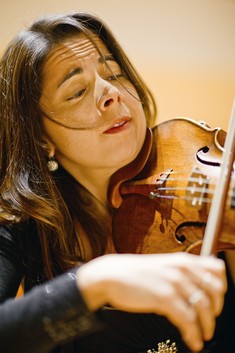 Simin GanaraBut the next work was another story. Shostakovich’s searing String Quartet No. 2 in A, Op. 68, was written in 1944, and is steeped not only in Jewish traditional music but also in the composer’s anguish over the Jewish wartime tragedy. It’s a dense, gripping work, with constantly interweaving currents of disquiet, optimism, despair and determination, and the Pacifica gave it a profoundly moving reading, with lead violinist Simin Ganatra a particular standout.
Simin GanaraBut the next work was another story. Shostakovich’s searing String Quartet No. 2 in A, Op. 68, was written in 1944, and is steeped not only in Jewish traditional music but also in the composer’s anguish over the Jewish wartime tragedy. It’s a dense, gripping work, with constantly interweaving currents of disquiet, optimism, despair and determination, and the Pacifica gave it a profoundly moving reading, with lead violinist Simin Ganatra a particular standout.
Maurice Ravel’s Quartet in F must be one of the most beguiling quartets in the entire repertoire — it seems to blow weightlessly through the imagination, like an avalanche of butterflies. It sounds best when utterly effortless, though, and if you were a quibbling sort of person you might have asked for more delicacy in the Pacifica’s reading. But these are full-bodied players, and they showed that, for all its elegant luminosity and subtle washes of color, real blood flows in the veins of Ravel’s masterpiece; by the end, it had become a deeply satisfying performance in every way.
PostClassical Ensemble Does Dvorak at Clarice Smith
By Stephen Brookes • The Washington Post • March 3, 2013
Where would American music be without — of all people — Antonin Dvorak? The Czech composer spent only three brief years here, but after arriving in New York in 1892 he threw himself into the indigenous (and largely ignored) music he found, incorporating everything from African-American spirituals to Native American dances into his own music. By the time he returned to Europe, Dvorak had written a string of iconic works, from the “New World” symphony to the American String Quartet — and carved out a new and profoundly “American” musical language that changed the musical landscape of the time. That unlikely episode in music history has been the subject of “Dvorak and America,” a multi-event festival mounted last week by the PostClassical Ensemble. The group has made a specialty of presenting neglected music in fresh contexts and striking new presentations, and the festival’s closing concert — presented Friday in the University of Maryland’s Dekelboum Concert Hall — stayed true to form, probing the nature of Dvorak’s “Americanism” and unveiling a new work that partly fulfilled an unfinished ambition of Dvorak himself.
That unlikely episode in music history has been the subject of “Dvorak and America,” a multi-event festival mounted last week by the PostClassical Ensemble. The group has made a specialty of presenting neglected music in fresh contexts and striking new presentations, and the festival’s closing concert — presented Friday in the University of Maryland’s Dekelboum Concert Hall — stayed true to form, probing the nature of Dvorak’s “Americanism” and unveiling a new work that partly fulfilled an unfinished ambition of Dvorak himself.
The evening started with the “Serenade for Strings” from 1875. Written years before Dvorak came to America, it’s an elegant, lovely work awash in Czech folk melodies, and it’s refined enough for even the most delicate European ears. But when the ensemble then turned to the 1895 “American Suite,” it wasn’t as if a breath of fresh of air had swept into the hall — it was more like a bracing gale. Exuberant, unfettered, almost cinematic in its rich colors and heady sweep of ideas, the work seemed to explode with vitality and a sense of freedom and infinite possibility. Much of that was due to superb playing by the ensemble itself — led with fluidity and precision by music director Angel Gil-Ordonez — but the music itself proved that Dvorak was no mere borrower of indigenous melodies: He had grasped the frontier mentality of America itself.
The real focus of the evening, though, was the premiere of a bold new work called “Hiawatha Melodrama,” put together by music historian Michael Beckerman and PostClassical artistic director Joseph Horowitz. Combining music from the “New World” symphony, the “American Suite” and the Violin Sonatina with a truncated version of Longfellow’s “The Song of Hiawatha,” it suggests what Dvorak might have written if he’d completed a planned vocal work based on the epic poem. The work had its moments: musically seamless, it built to a stirring climax and showcased Dvorak’s extraordinary gift for tone-painting. But Longfellow’s poem — a best-seller in its day — has not, in all honesty, aged very well. Bass-baritone Kevin Deas did what he could with its relentless trochees and the begging-for-parody, Gitche Gumee lingo. But by the end, it was hard not to think that Dvorak’s music stood better on its own.

